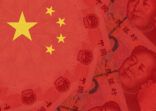“Investment, exports and retail have traditionally been the growth areas for the Chinese economy, but now it’s shifting demographics, higher domestic consumption and technological innovation,” Michelle Qi, chief investment officer, equities, China at Eastspring Investments said in a recent webinar.
Specifically, the pandemic has accelerated long-term trends in three key sectors:
First, the healthcare sector, as the government intends to increase investment in the public health system, with intensive care unit beds likely to double in five years, and the number of monitoring systems and respirators to increase up to five-fold. Meanwhile, the growth rate in private healthcare spending will accelerate as people become more aware of preventive treatments (for example, HPV vaccination requests increased 11-times year-on-year during T-mall’s recent 618 Shopping Festival on 18 June), and online healthcare services will be further boosted by demand for contactless diagnosis and the government’s relaxation of online reimbursement.
Second, the consumer sector will enjoy strong growth in leisure and sports apparel goods, with domestic brands (guo chao)becoming more popular because of the launch of new online platforms and overseas travel restrictions . Moreover, food industrialisation could accelerate as consumers switch to pre-packed food from traditional wet markets, which were the source of the coranavirus outbreak.
Finally, the technology sector should continue to develop rapidly across many areas, according to Qi. She expects strong demand for data consumption which will boost IDC infrastructure and data centre investment, 25% annual growth in cloud computing due to low penetration in the China, 5G infrastructure spending to accelerate, and strong demand for IOT devices as well as electric vehicles.
Market and economic recovery
Against the backdrop of a nationwide lockdown in response to the Covid-19 outbreak, the Chinese economy contracted in the first quarter of 2020 for the first time in over 40 years.
“However, most economic activities began to show signs of recovery since March 2020, on the back of successful containment measures and supportive policies. As such, we expect the Chinese economy to continue to normalise [to 3% GDP growth] over the course of the year. We also expect more monetary and fiscal stimulus measures to be implemented as presented in the recently-concluded National People’s Congress (NPC),” said Qi.
She pointed out that the CSI 300 index of leading stocks listed on the Shanghai and the Shenzhen stock exchanges is up 16% from its March trough, and has almost recovered its losses since the start of this year. The index is now trading at 10 times earnings, which is around its historical average valuation.
Qi emphasised that the A-share market gives investors access to the stocks of a large number of companies unavailable either in Hong Kong or as US ADRs, and also stressed their relatively low correlation to the performance of other equity markets.
Correlation of A-shares to global equity markets

Source: Eastspring
Potential risks
“However, further market upside would come from continued improvement in the economy and in sustainable corporate earnings,” said Qi.
Fragile external demand as well as US-China tensions are likely to be the major sources of downside risks.
Consequently, Eastspring favours: stocks that have limited overseas exposure and can benefit from domestic policy easing, such as selected building materials, consumer and property companies; stocks that benefit from the global pandemic, such as selected healthcare players; leaders that have developed strong online distribution channels to benefit from changing consumer habits; and laggards that should recover along with the gradual restart of the global economy, and which face limited supply chain disruptions.
In any case, Qi is confident that “China will maintain its position in global manufacturing supply chain, because it is the biggest market for end-products, it has a vast pool of low-cost skilled engineers and it gas a comprehensive supply chain ecosystem.
In particular, stable supply chains will underpin the country’s electric vehicle industry, pharmaceuticals and the long-term evolution of its technology sector, despite US sanctions against companies such as Huawei.
Nevertheless, the risks are substantial.
First, weak global demand for Chinese exports will weigh on the Chinese economy and on employment.
“Although China’s exports rebounded in April, this was probably driven by the delivery of postponed export orders, as well as rising demand for medical goods and consumer necessities given the supply disruption in the rest of the world. The weak PMI for export orders in April suggests that external demand remains sluggish,” said Qi.
Second, overly aggressive policy easing would aggravate financial leverage, fuel property speculation and pose a risk to long-term financial stability.
Third, there is also a danger that US-China tensions might escalate and extend beyond trade. For instance, the US restrictions on Huawei, limiting its ability to use US technology and software to design and manufacture its semiconductors abroad, will affect multiple foreign producers which sell to Huawei and its affiliates.
“Finally, a potential resurgence of Covid-19 in the coming winter could again weigh on economic growth,” said Qi.

















